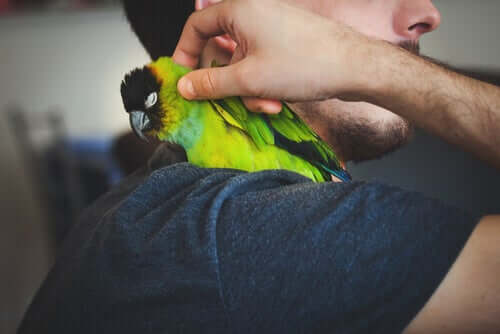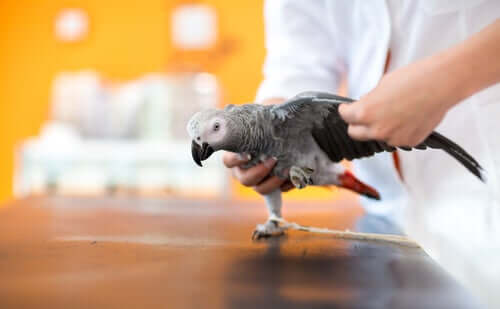All About Parrot Fever


Written and verified by the vet Eugenio Fernández Suárez
Parrot fever is also known as psittacosis or ornithosis. It’s quite a contagious disease and can cause serious problems for your pet, and even yourself. It’s important to pay close attention to any possible symptoms because it can be transmitted to humans.
Causes of parrot fever
This infectious disease is caused by a bacterium called Chlamydia psittacci bacteria. Animals or humans usually catch it by breathing in infectious particles from feces, feathers, or eye and respiratory secretions from an infected animal.
Parrot fever can remain dormant in birds and only activate during a period of stress or depression. This is a common occurrence in exotic birds.
Symptoms
This disease can be quite difficult to spot. It causes non-specific symptoms that are similar to the flu, such as respiratory problems or eye infections.
Furthermore, as we mentioned, the disease might remain dormant, and its ability to depress the immune system may cause other diseases in caged birds. In this scenario, clinical situation becomes more complex.
Symptoms often include eye infections like conjunctivitis, red eyes, swelling, and increased secretions. It also causes respiratory problems such as increased nasal discharge and sneezing.
To this, we can add weight loss, diarrhea, and even depression. So, regardless of your suspicions, you should take your pet to the vet as soon as you see any of these symptoms.

Symptoms often include eye infections like conjunctivitis, red eyes, swelling, and increased secretions. It also causes respiratory problems such as increased nasal discharge and sneezing.
Diagnosis and treatment
First, your vet will carry out some tests to detect the presence of the chlamydia that causes the disease. They might do this by testing your pet’s feces or secretions, or they can carry out a blood test to check for antibodies.
Once diagnosed, your vet will recommend treatment. However, being a bacterial infection, it’s normally simple to treat using antibiotics.
Given how contagious the disease is, if you have several parrots, you should consider getting all of them tested. If one of your parrots is infected, you should seriously consider separating them to prevent the spread of disease.

First, your vet will carry out some tests to detect the presence of the chlamydia that causes the disease. They might do this by testing your pet’s feces or secretions, or they can carry out a blood test to check for antibodies.
How to prevent the spread of parrot fever
This disease can spread to other birds and even people, so you should take extra care, although there’s no need for alarm. Simply take care of the hygiene of your bird’s enclosure, particularly if you have a lot of them in an aviary.
In people, parrot fever can cause flu-like symptoms that are particularly worrying in children, the elderly and people with immunodeficiency. This is why it’s very important to follow your vet’s instructions and even go to the doctor yourself if you notice any symptoms. Fortunately, in both cases, this disease is fairly easy to treat.
If you’ve just acquired a new parrot, it’s a good idea to take them to the vet for a check-up first. If it turns out that your parrot has this illness, then you should take the following precautions:
- Wear gloves and a mask when cleaning their cage
- Wash your hands after handling your bird
- Follow your vet’s instructions
- Practice extreme cleanliness
This text is provided for informational purposes only and does not replace consultation with a professional. If in doubt, consult your specialist.